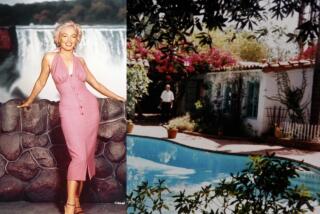Armenian American Museum plan in Glendale brings concerns over traffic
- Share via
Opponents of a proposed Armenian American Museum in Glendale voiced concerns over the potential for traffic and parking impacts, while backers endorsed the idea of creating a cultural hub and community resource during a public forum earlier this week.
More than 100 people packed a meeting room at St. Gregory Armenian Catholic Church for a forum organized by the museum development committee.
The contested site, a 1.37-acre, city-owned parking lot, is at Mountain Street and Verdugo Road, across from Glendale Community College and abutted by a residential neighborhood.
While concerned residents say they’re not against the idea of a 30,000-square-foot museum, they’re not a fan of the location.
“The museum should be in a central area of the city, where City Hall is, and there is a core civic center area,” resident Tom Searson said in a phone interview after the meeting. “I think that’s probably the best location; there’s an infrastructure there. There’s shopping, all these things that will attract pedestrian traffic.”
Adding a museum to the area could generate congestion that nearby streets can’t handle, he said.
Conceptual designs depict a two-story building with a façade resembling both local and Armenian mountains. Inside, a library with research facilities, exhibitions and a coffee shop are planned.
Teacher Taline Arsenian, who was among those at the meeting, called the location, which is within walking distance of the college, ideal.
“I’m looking forward to this museum opening, to students from our community and neighboring communities being exposed to all of the cultural awareness and education they’re going to get,” she said.
Berdj Karapetian, chairman of the museum’s project development committee, said half of the exhibits will be permanent, while the other half will be traveling collections that feature other cultures, including Korean and Indian.
He said the museum isn’t looking at other sites.
One resident asked why the design couldn’t reflect the architecture of nearby Spanish homes. Architect Aram Alajajian explained that differentiating the building was intentional, citing as examples the distinct designs of the Broad and Getty museums.
“A museum is an iconic project,” he said. “An iconic building needs to stand out.”
In response to concerns over potential activities, Tigranna Zakaryan, the museum’s outreach director, said the property would not host weddings or other events “completely unrelated to what the museum stands for.”
Several residents of the adjacent Rossmoyne neighborhood said they were worried about added traffic.
A traffic study is planned, as are future reviews by City Hall. The Glendale City Council eventually would have to give its approval for the project to move forward.
The traffic study likely will be conducted next month and take into account peak hours, especially when Glendale College students arrive in the morning, traffic engineer Jano Baghdanian said.
While data still has to be collected, some things already are known about museum traffic.
“One [factor] with museums is that they do not generate traffic during peak hours; they generate traffic during the day. … A majority of museum visits occur on Saturdays and Sundays,” Baghdanian said at the forum.
As for parking, the Verdugo and Mountain lot houses 176 spaces used by college students and visitors of the adjacent Glendale Civic Auditorium.
More than a year ago, the City Council granted an agreement with the museum’s committee not to lease the lot while a conceptual design was prepared.
While final details have a long way to go, the city already has stipulated that the museum’s construction must include an underground parking structure to replace the existing lot — accessible by students — in addition to spaces for visitors.
While there’s no price tag for the entire project, the first financial goal through fundraising is $10 million, Zakaryan said.
She declined to say how much has been raised.
Mikailian writes for Times Community News.
More to Read
Sign up for Essential California
The most important California stories and recommendations in your inbox every morning.
You may occasionally receive promotional content from the Los Angeles Times.











